Every era always has its own trend. When the next wave comes, they will gradually recede in the passage of time, or become the object of rejection in the new wave, end in a hurry, and almost disappear in the new era. But because of this, they have become the unique style of their peerless years.
From the 1920s to the 1960s, it was the colorful neon lights that emerged on the streets of North America, which outlined people’s diverse nightlife.
01 Engineers who don’t know chemistry are not good neon inventors
Neon was first discovered in 1898 by two British chemists, Sir William Ramsay and Morris W. Travers. Not long after, American electrical engineer Daniel McFarlan Moore brought the first gas-discharge lamps to the market, the nitrogen-made lamps that became the precursor to neon lights.
In 1910, neon lights made their debut at the Paris Motor Show. Its inventor, the French engineer Georges Claude, invented the neon light by illuminating neon gas, a by-product of his own air liquefaction business, in a sealed tube. In 1915, Claude obtained a patent for corrosion-resistant electrodes, which removed the last technical obstacle and started the road to industrialized mass production of neon lights.
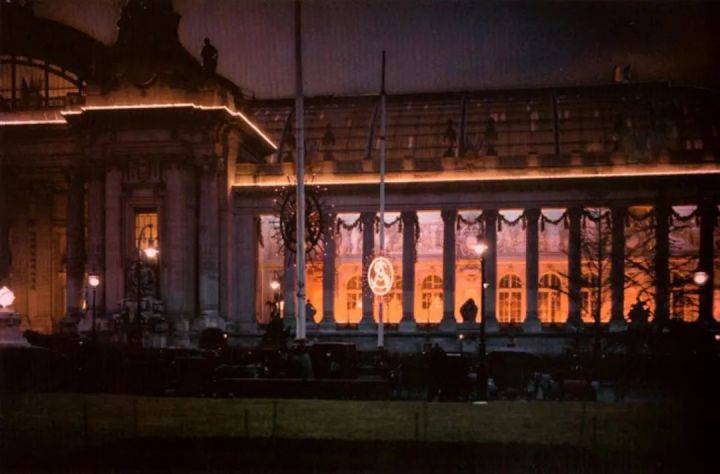
Neon lights in front of the Grand Palais in Paris © Léon Gimpel (1910/1912)
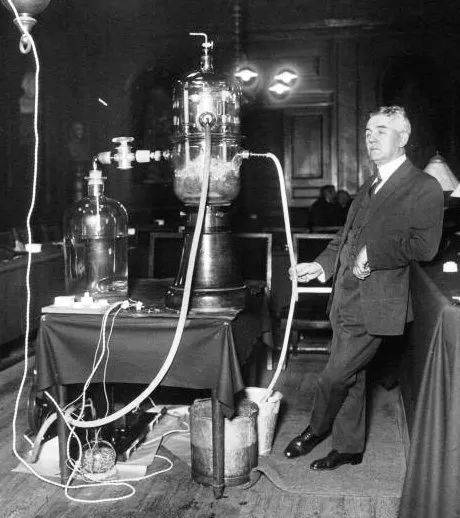
Georges Claude demonstrating energy from the ocean © Bibliotheque Nationale de France
At the beginning, Claude only regarded neon lights as ordinary indoor and outdoor lighting, and his partner Jacques Fonseque took a fancy to its application potential in the advertising industry. Sure enough, neon signs were very popular as advertising signs. People like its psychedelic lights and diverse text and graphics, and merchants are willing to buy this novelty sign at a high price. Neon lights gradually became popular in Europe, and Claude also began to expand his business empire to other corners of the world.
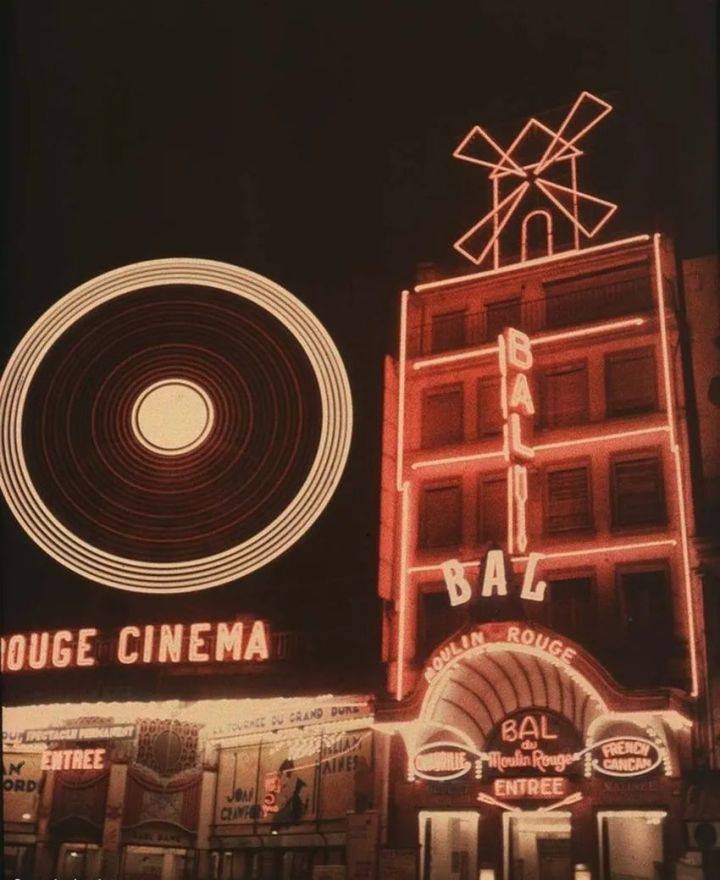
The striking large neon sign in the place Blanche © Léon Gimpel (1929)
02 The colorful in the dark is the one that Party A wants
In 1923, Los Angeles car dealer Earl C. Anthony bought two “Packard” signs from Claude’s company, and neon lights began to successfully enter the United States, and more colors were developed.
Neon first became a symbol of car culture, dotting highwayside fast-food restaurants, gas stations and motels at night, and then lighting up city bars after Prohibition was lifted. Times Square in New York is also famous for its neon signs.
Since the popularity of neon lights, there have been many small workshops infringing on the manufacture. After the patent expired in 1932, the craftsmen became more reckless, and Claude’s business was hit hard until the designer Douglas Leigh joined. He combined bold and creative signs and lighting designs with neon lights for a moment.
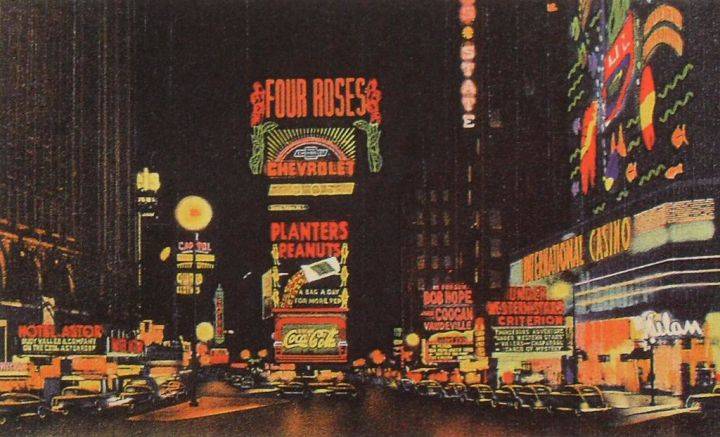
New York Times Square in the 1930s on a postcard © Flickr
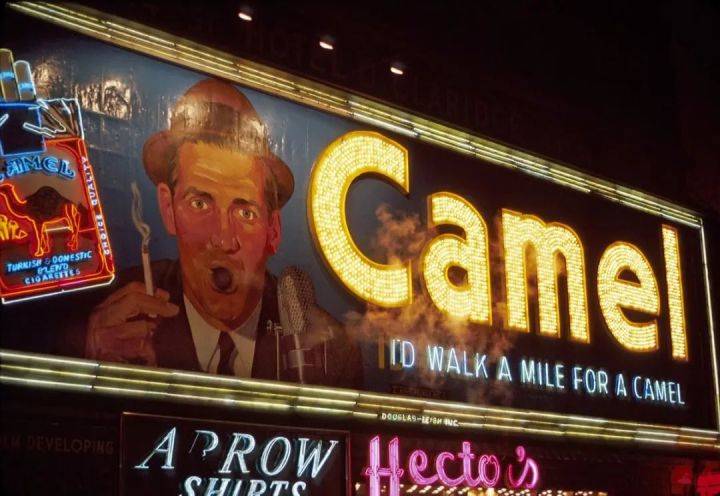
The Camel man & sign in Times Square combines the sign with smell, sound and mist, so that the man on the sign can swallow clouds For eye-catching ©Unknown
In the 1940s and 1950s, Las Vegas became the epitome of neon culture, with garish colors, patterns, and lighting dynamics tightly integrated with architecture that filled the streets. Unlike Douglas Leigh’s concept of signboards as landscaping, Las Vegas-specific culture makes the signboard itself a spectacular spectacle.
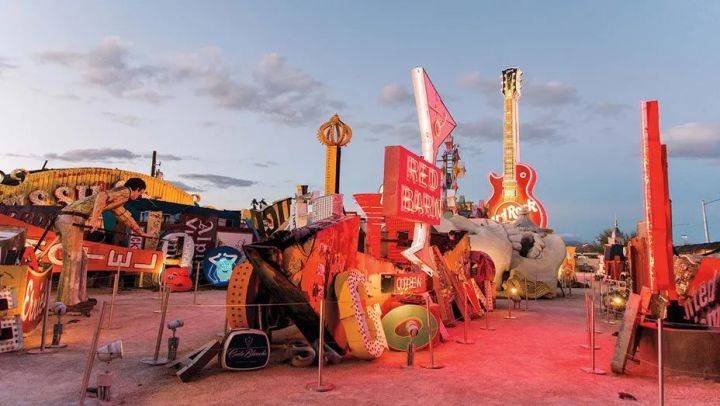
The Neon Museum in Las Vegas © Deidra Wilson
Canada, also located in North America, also experienced neon fever. As Canada’s “neon capital”, Vancouver’s number of lights reached its peak in the 1950s, with nearly 20,000 lights scattered all over the neighborhoods, with an average of one for every 18 residents, second only to Las Vegas in total. Going to the street to watch neon lights even became a pastime for people at the time.
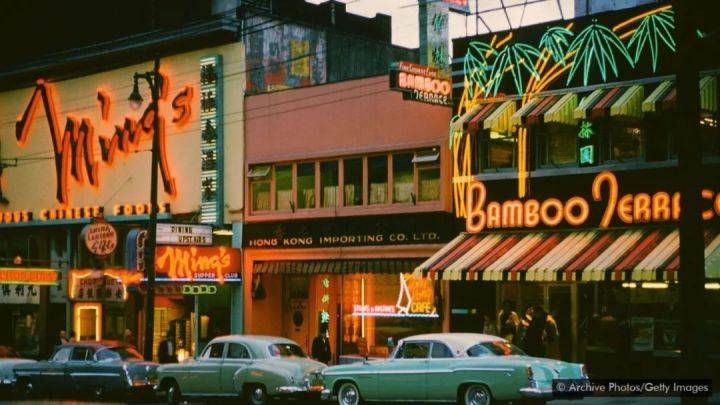
Pender Street, Vancouver’s Chinatown, 1960s © Archive Photos/Getty Images
03 Is it vulgar or unstoppable? Who has the final say?
After reaching its heyday in the 50s, neon began to decline. Bright colors often associate it with the red light district, public aesthetics have changed, and cities have begun to promulgate anti-neon laws.
In 1958, Vancouver’s Community Arts Council asked City Hall to revamp the city’s appearance, arguing that tacky neon lights were not worthy of the city’s proud natural beauty and could not be allowed to tarnish the city’s reputation.
“What kind of face do we want to show the world? If we insist on this very noisy and shiny appearance, how do we introduce ourselves? Where is our dignity? “
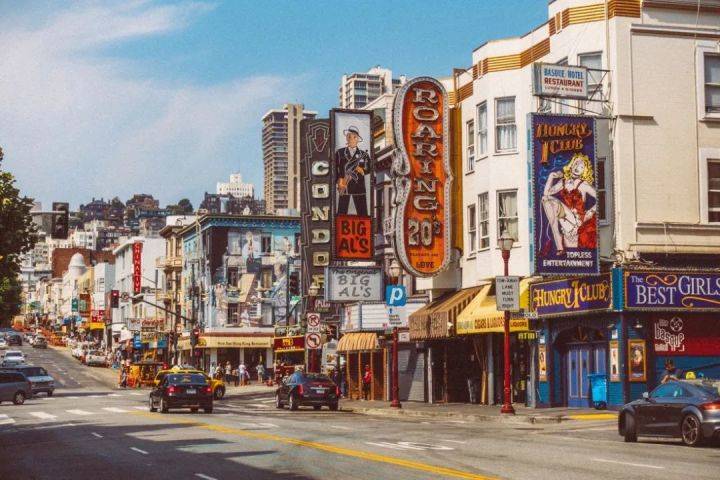
San Francisco’s North Beach is also known as the red light district © Starcity
In 1974, new sign regulations were introduced, which imposed various strict restrictions on neon lights. Existing lights were spared, but once repaired and reinstalled, they had to comply with the new regulations. This greatly hit the development of neon lights, and now only a few lights have survived, some of which are left on the streets, and some of them have entered the city museum.
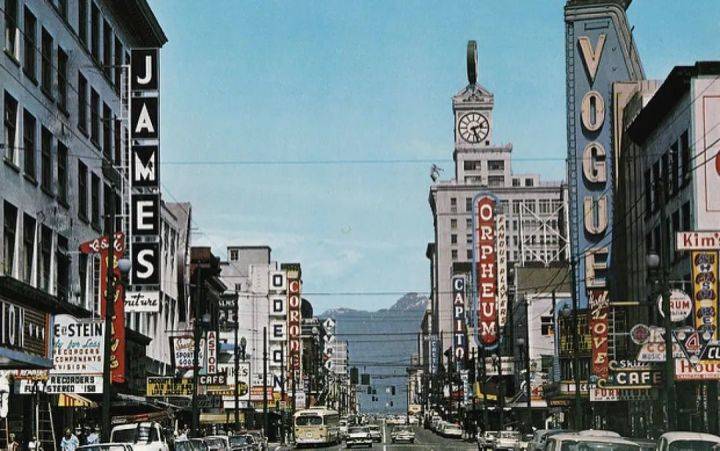
Granville Street in downtown Vancouver is full of dense neon lights, known as the “Great White Way” in 1965 ©George Weinhaupl
The number of neon signs in the United States also declined rapidly in the 1960s. Fluorescent and plastic signs have become the new favorites due to their low prices, lower maintenance costs and savings on electricity bills, neon is out.
The controversy over neon isn’t just about aesthetics, it’s also about light pollution. Does the flashing light affect the rest of the surrounding residents? Does a cloudy city with long nights need more light? These questions are inconclusive, but they are worth thinking about.
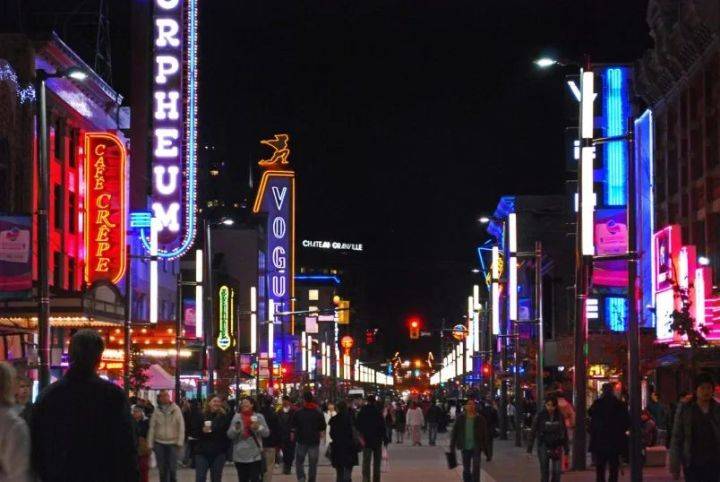
Granville Street today © Getty Images
04 Fashion is a circle, feng shui turns
In 1981, the Museum of Neon Art in Los Angeles became the world’s first museum dedicated to neon signs. The variety of colors and lighting quality makes it still a place in the electrical signal industry, and today’s LED and plastic tubes are not quite as bright as neon.
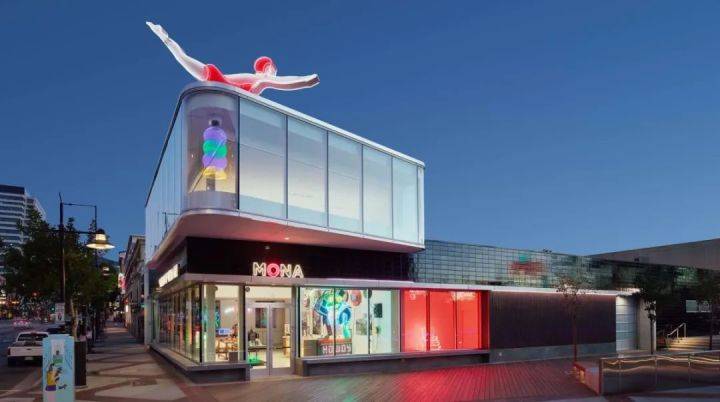
The Museum of Neon Art in Los Angeles © Museum Of Neon Art
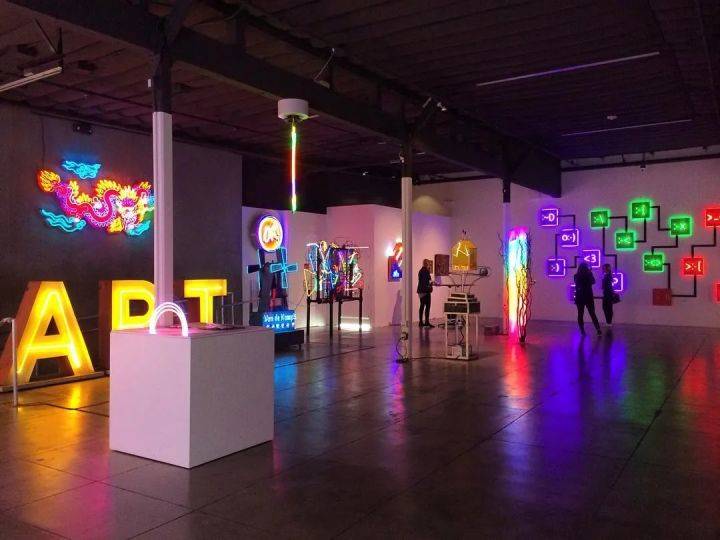
Interior of the Neon Art Museum © Agnes
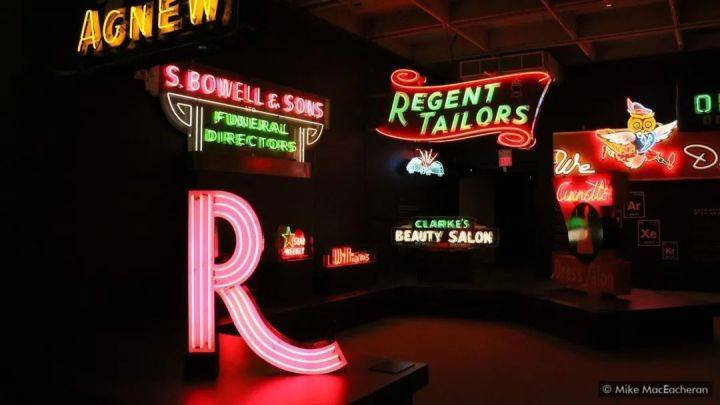
Vancouver Museum puts preserved old neon signs on permanent display © Mike MacEacheran
Vancouver’s signage regulations have been revised several times, gradually relaxing the requirements, but there are still many restrictions.
Now, the neon trend has long since faded, and there are few craftsmen who make glass tubes , and energy-saving LEDs have become the mainstream. Despite this, some businesses are still willing to use neon lights full of nostalgic mid-century nostalgia as signs, artists are also exploring its retro charm, some new generations of young people are beginning to appreciate this psychedelic visual noise again, and museums are also preserving , restore and exhibit those historic neon lights .
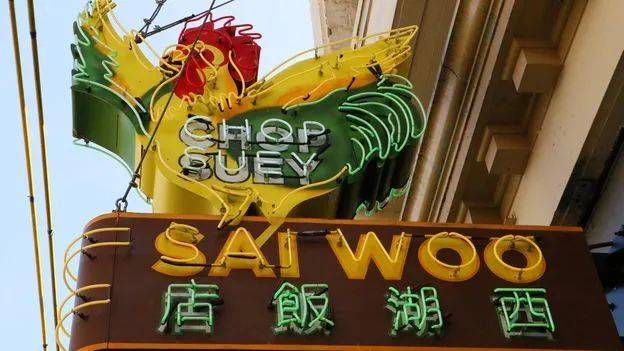
Owner Salli Pateman spent $20,000 to rebuild the restaurant’s original neon sign © Mike MacEacheran
The reinvention of neon isn’t just about adding some excitement to the cityscape, the nostalgia and sense of community it creates is bright and strong. Discovering their significance to today’s society from old fashions and aesthetics may inspire the development of today’s multiculturalism.
References:
DeBack, Skip. “The Evolution of Neon.” Neon Library, neonlibrary.com/neon_sign_history.html. Accessed 23 Oct. 2020.
Gustin, Georgina. “The Bright Past And Dim Future Of Neon.” Digg, 27 Oct. 2015, digg.com/2015/neon-lights-history.
Lack, Roland-François. “Neon Paris c.1913.” The Cine-Tourist, www.thecinetourist.net/neon-paris-c1913.html. Accessed 23 Oct. 2020.
Lederman, Marsha. “The ‘anti-Neon Crusade,’ Vancouver’s Light-Pollution Battle from Another Era.” The Globe and Mail, 28 Jan. 2012, www.theglobeandmail.com/news/british-columbia/the-anti-neon-crusade-vancouvers-light-pollution-battle-from-another-era/article4242522.
MacEacheran, Mike. “North America’s Unexpected Neon Jungle.” BBC, 4 May 2018, www.bbc.com/travel/story/20180503-north-americas-unexpected-neon-jungle.
Nair, Roshini. “Bright Lights, Big City: Vancouver Looks to Change Its Sign Bylaws.” CBC, 23 Aug. 2016, www.cbc.ca/news/canada/british-columbia/bright-lights-big-city-vancouver-looks-to-change-its-sign-bylaws-1.3732818.
Sciarpelletti, Laura. “Filmmaker Revisits 1997 Film on Vancouver’s Fabulous Neon Sign Era.” CBC, 25 Mar. 2019, www.cbc.ca/news/canada/british-columbia/filmmaker-revisits-1997-film-on-vancouver-s-fabulous-neon-sign-era-1.5071093.
Staff Writer / Vancouver is Awesome. “The Historic Past of Some of Metro Vancouver’s Last Standing Neon Signs.” Vancouver Courier, 5 May 2019, www.vancourier.com/news/the-historic-past-of-some-of-metro-vancouver-s-last-standing-neon-signs-1.23808966.
Stern, Rudi. “Neon.” American Heritage, June 1979, www.americanheritage.com/neon.
Wikipedia contributors. “Neon.” Wikipedia, 2020, en.wikipedia.org/wiki/Neon.
Yarger, John. “Golden Age of Neon.” North American Signs, 8 May 2015, www.northamericansigns.com/golden-age-neon.via DSC设计罐头


Comments